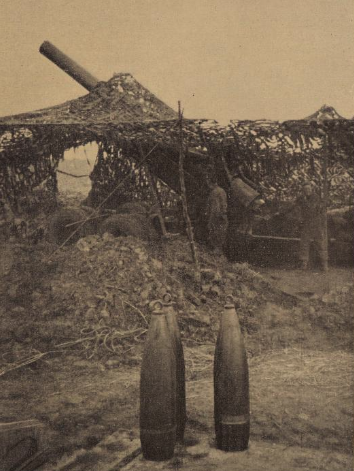RARE! WWII Normandy Ardennes Rhine Campaigns "Pvt. Leonard J. Gallagher" 195th Field Artillery Battalion U.S. Soldier Combat Bible























RARE! WWII Normandy Ardennes Rhine Campaigns "Pvt. Leonard J. Gallagher" 195th Field Artillery Battalion U.S. Soldier Combat Bible
Comes with a hand-signed C.O.A. and a detailed document with additional research
This extremely rare and museum-grade World War II U.S. soldier’s personal bible was carried by Battle of the Bulge veteran Pvt. Leonard J. Gallagher “nicknamed SLIM” of “Battery A” of the 195th Field Artillery Battalion. Pvt. Leonard J. Gallagher was assigned to the 195th Field Artillery Battalion on June 17th, 1944 and was awarded FIVE battle participation stars for his combat in Normandy Campaign, Ardennes Campaign, and the Rhine and Ruhr Campaigns.
This heavily used and worn WWII soldier’s bible was carried into combat and saw action in some of the most famous battles of World War II in the European Theater including landing on Normandy’s Utah Beach on D-Day +9. From June, 1944 the 195th Field Artillery Battalion saw heavy action in the Battle of Cherbourg supporting the 4th and 79th Infantry Divisions with their Howitzer artillery. The 195th Field Artillery Battalion took part in the assault on Montebourgh, Valognes, Douve River, and St. Lo. In August the 195th Field Artillery Battalionsuppored more Allied Divisions in the Brittany region of France fighting the German 7th Army. The 195th Field Artillery Battalion then saw heavy action near Belgium at the Maginot Line and fired some of the first Allied rounds at the infamous Siegfried Line (near Venwegen, Germany). The 195th Field Artillery Battalion also took part in the capture of the Battle of Aachen, and the Huertgen Forest. The 195th Field Artillery Battalion would become most famous during their efforts in the Ardennes Campaign and the infamous Battle of the Bulge. During the Battle of the Bulge, the 195th Field Artillery Battalion provided artillery support during some of the most intensive fighting on the front. The 195th Field Artillery Battalion later went on to fight and provide support during the Rhine and Ruhr Campaigns.
FOR THE FULL HISTORY OF THE 195TH PLEASE VISIT:
https://archive.org/details/ontheway195th/page/n3/mode/2up
Full Combat History of the Battle of the Bulge:
The Battle of the Bulge (16 December 1944 – 25 January 1945) was the last major German offensive campaign on the Western Front during World War II. It was launched through the densely forested Ardennes region of Wallonia in eastern Belgium, northeast France, and Luxembourg, towards the end of World War II. The surprise attack caught the Allied forces completely off guard. American forces bore the brunt of the attack and incurred their highest casualties of any operation during the war. The battle also severely depleted Germany's armored forces, and they were largely unable to replace them. German personnel and, later, Luftwaffe aircraft (in the concluding stages of the engagement) also sustained heavy losses.
The Germans officially referred to the offensive as Unternehmen Wacht am Rhein ("Operation Watch on the Rhine"), while the Allies designated it the Ardennes Counteroffensive. The phrase "Battle of the Bulge" was coined by contemporary press to describe the bulge in German front lines on wartime news maps,[16][c][17] and it became the most widely used name for the battle. The German offensive was intended to stop Allied use of the Belgian port of Antwerp and to split the Allied lines, allowing the Germans to encircle and destroy four Allied armies and force the Western Allies to negotiate a peace treaty in the Axis powers' favor. Once that was accomplished, the German dictator Adolf Hitler believed he could fully concentrate on the Soviets on the Eastern Front. The offensive was planned by the German forces with utmost secrecy, with minimal radio traffic and movements of troops and equipment under cover of darkness. Intercepted German communications indicating a substantial German offensive preparation were not acted upon by the Allies.[18][19]
The Germans achieved total surprise on the morning of 16 December 1944, due to a combination of Allied overconfidence, preoccupation with Allied offensive plans, and poor aerial reconnaissance. The Germans attacked a weakly defended section of the Allied line, taking advantage of heavily overcast weather conditions that grounded the Allies' overwhelmingly superior air forces. Fierce resistance on the northern shoulder of the offensive, around Elsenborn Ridge, and in the south, around Bastogne, blocked German access to key roads to the northwest and west that they counted on for success. Columns of armor and infantry that were supposed to advance along parallel routes found themselves on the same roads. This, and terrain that favored the defenders, threw the German advance behind schedule and allowed the Allies to reinforce the thinly placed troops. Improved weather conditions permitted air attacks on German forces and supply lines, which sealed the failure of the offensive. In the wake of the defeat, many experienced German units were left severely depleted of men and equipment, as survivors retreated to the defenses of the Siegfried Line.
The Germans' initial attack involved 406,000 men; 1,214 tanks, tank destroyers, and assault guns; and 4,224 artillery pieces. These were reinforced a couple of weeks later, bringing the offensive's total strength to around 450,000 troops, and 1,500 tanks and assault guns. Between 67,200 and 125,000 of their men were killed, missing, or wounded in action. For the Americans, out of 610,000 troops involved in the battle,[20] 89,000 were casualties.[21] While some sources report that up to 19,000 were killed,[21][22] Eisenhower's personnel chief put the number at about 8,600.[23] British historian Antony Beevor reports the number killed as 8,407.[24] It was the largest and bloodiest battle fought by the United States in World War II.